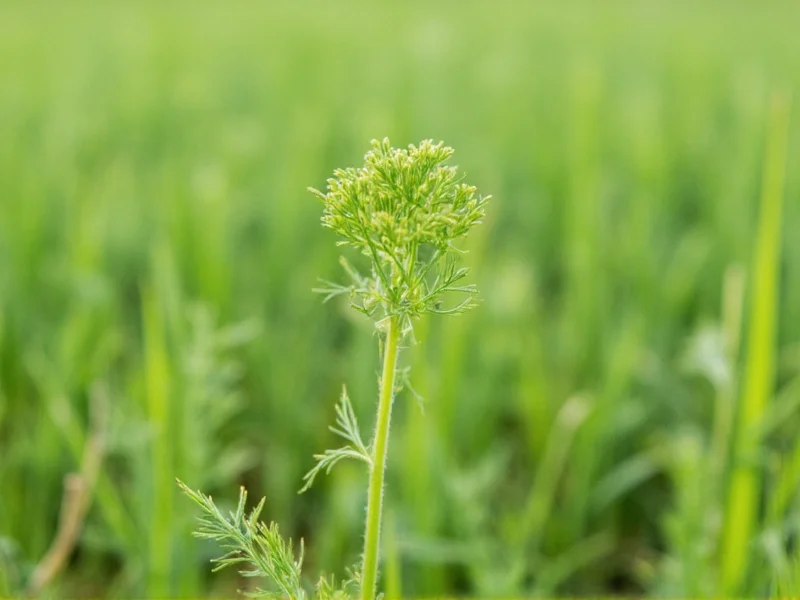Understanding dill sprig measurements prevents common cooking mistakes that can dramatically alter dish flavors. Unlike standardized measurements like teaspoons or cups, herb sprigs represent a natural, variable unit that requires practical knowledge to convert accurately for recipe success.
What Exactly Is a Dill Sprig?
A dill sprig consists of a slender stem with feathery green leaves attached. In culinary terms, a single sprig typically measures 2-4 inches long and contains enough foliage to yield about 1/2 to 1 teaspoon of chopped fresh dill. The exact volume depends on several factors:
- Plant maturity - Younger dill has more tender stems and smaller leaves
- Harvest time - Morning-harvested dill contains more essential oils
- Stem thickness - Thicker stems yield less usable leaf material
- Leaf density - Bushier plants provide more volume per sprig
Professional chefs and experienced home cooks recognize that dill sprig measurements require visual assessment rather than precise weighing. The characteristic fern-like appearance makes dill easily distinguishable from other herbs like fennel or caraway, which have similar but distinct leaf structures.
Dill Sprig Measurement Guide
Converting dill sprigs to standardized measurements ensures recipe consistency. The following reference provides accurate conversions for various cooking scenarios:
| Dill Measurement | Fresh Dill Equivalent | Dried Dill Equivalent | Best For |
|---|---|---|---|
| 1 dill sprig | ½-1 tsp chopped | ⅛ tsp dried | Garnishes, delicate sauces |
| 3-4 dill sprigs | 1 tbsp chopped | ¼ tsp dried | Dressings, fish dishes |
| 8-10 dill sprigs | ¼ cup chopped | ¾ tsp dried | Pickling, potato salads |
| 15-20 dill sprigs | ½ cup chopped | 1½ tsp dried | Dill bread, hearty stews |
When measuring fresh dill, always remove the lower woody portion of the stem before chopping. The tender upper portion contains the most flavorful oils and provides better texture in finished dishes. For precise measurement, lightly pack chopped dill into measuring spoons without compressing it.
Accurate Dill Substitutions
Understanding proper dill substitutions prevents flavor imbalances in recipes. The conversion ratio between fresh and dried dill follows a 3:1 rule due to concentration differences:
- Fresh to dried - Use one-third the amount of dried dill when substituting for fresh
- Dried to fresh - Triple the dried measurement when using fresh dill
- Other herb alternatives - Tarragon (for French cuisine) or fennel fronds (for Mediterranean dishes)
When substituting dill sprig measurements in pickling recipes, maintain the 3:1 ratio but consider adding 10-15% more dried dill to compensate for flavor loss during the canning process. For creamy sauces and dressings, fresh dill provides superior flavor release compared to dried alternatives.
Practical Usage Tips for Dill Sprigs
Maximize dill's flavor impact by following these professional cooking techniques:
Timing Matters
Add whole dill sprigs early in cooking for subtle background flavor in soups and stews. For vibrant fresh flavor in salads, dips, and cold dishes, incorporate chopped dill during final preparation stages. Heat rapidly diminishes dill's delicate flavor compounds, so add fresh dill near the end of cooking for maximum impact.
Proper Storage Techniques
Prolong fresh dill's shelf life by treating sprigs like cut flowers. Trim stem ends and place in a glass with 1 inch of water, covering loosely with a plastic bag. Store in the refrigerator for up to 10 days. For longer preservation, freeze whole sprigs in olive oil or dry dill by hanging bunches upside down in a dark, well-ventilated space.
Common Measurement Mistakes
Cooks frequently err by:
- Using the entire stem including woody portions
- Packing chopped dill too tightly in measuring spoons
- Ignoring recipe context (1 sprig means different volumes in different recipes)
- Substituting dried dill at 1:1 ratio instead of 3:1
When a recipe specifies "a small bunch of dill" or "several sprigs," estimate based on dish volume. For a standard 4-serving salad, 8-10 sprigs typically provides ideal flavor without overwhelming other ingredients.
Special Considerations for Different Cuisines
Dill usage varies significantly across culinary traditions. Scandinavian recipes often call for generous amounts (15-20 sprigs for gravlax), while French cuisine uses more restrained quantities (2-3 sprigs for sauces). Russian and Eastern European dishes frequently incorporate whole sprigs during cooking then remove before serving, while Mediterranean preparations often use chopped dill throughout the cooking process.
When adapting international recipes, consider these regional measurement norms. A "sprig" in a traditional Polish pickle recipe might equate to 3-4 sprigs in an American cookbook due to differing culinary conventions and dill varieties grown in various regions.











 浙公网安备
33010002000092号
浙公网安备
33010002000092号 浙B2-20120091-4
浙B2-20120091-4